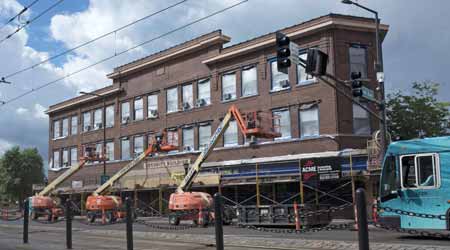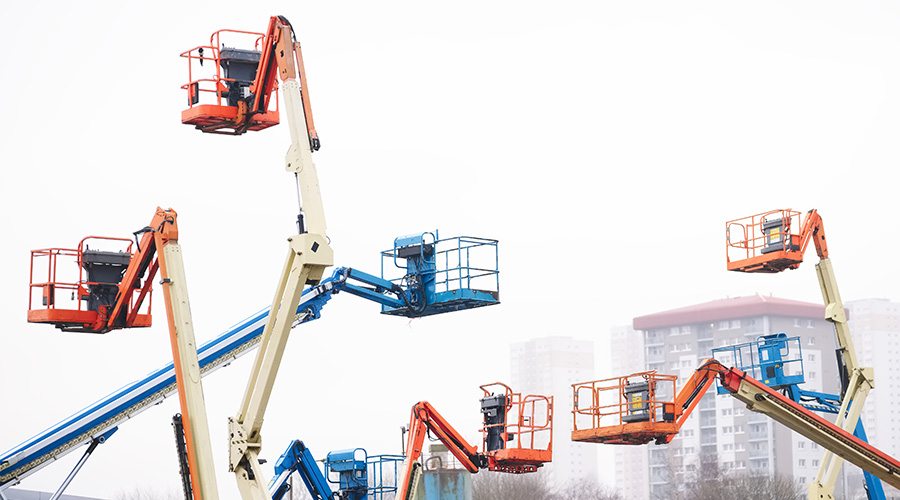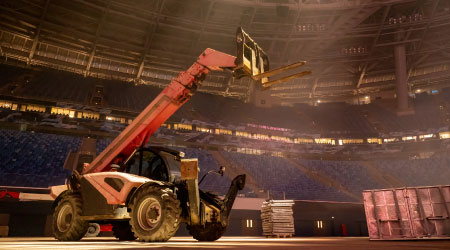 Exterior facades, along with gym and auditorium ceilings, are among the most common applications for mobile elevating work platforms.
Exterior facades, along with gym and auditorium ceilings, are among the most common applications for mobile elevating work platforms.Lift Selection To Meet Facility Needs
A new generation of mobile elevating work platforms gives technicians greater access to facilities’ hard-to-reach areas
Specifying the most appropriate lift based on department needs requires that managers consider important factors such as type, capacity, weight, rigging, boom length and extension length.
For example, a construction project that includes mounting 50 HVAC air-handling units on the roof, and the only access to the roof is a hatch accessed by a ladder from inside the building.
Most HVAC units are too large to go through the hatch, so installers require a lift to move the new HVAC equipment to and from the roof.
If manager cannot find a unit to fit through the hatch, the project requires a boom and extension lift with the capacity to raise the equipment weight up and across the building roof to the mounting pad — easily 120 feet or more for a four-story building that is 70 feet wide. The lift must be light enough to avoid damaging landscapes, parking lots, driveways and walks.
Many parking lots are designed for just the weight of cars, not heavy equipment. The weight of a lift will create ruts in the asphalt unless managers make provisions to use heavy plywood wheel supports.
Even then, it is a good idea to make sure the equipment operator’s liability insurance covers such damage. If the lift is too heavy, even double sheets of heavy plywood will not prevent damage to these surfaces because the pavement plus the base is not thick and dense enough to support the load.
Managers also must consider rigging, which includes hooks, chains and straps that attach the load to the lift cable. They must be easily attachable to the load and have the capacity to handle the weight lifted plus a factor for the swinging and other load movements, such as travel, as the load is lifted. The boom also must be long enough to reach vertically. The extension must reach horizontally far enough across the roof to hang vertically over the mounting pad at the work site.
With the load extended far from the center of gravity of the lift body, the counterweight outriggers must be long and strong enough to prevent the torque from tipping the lift. Up-to-date lifts feature instrument alarms and controls that prevent going beyond the combined lift and reach capacity.
Managers also must consider the sloping landscape. Warning controls are available to detect the approach to limits, and locking controls must be in place to prevent exceeding these limits.
Thomas A. Westerkamp is a maintenance and engineering management consultant and president of the work management division of Westerkamp Group LLC.
Related Topics:















